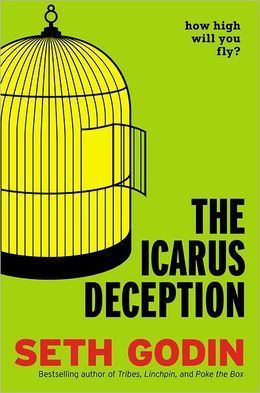
Let’s explore a summary of “The Icarus Deception: How High Will You Fly?” by Seth Godin.
Introduction
In this inspiring book, Seth Godin challenges readers to view their work as a form of art. The title alludes to the myth of Icarus, who flew too close to the sun and fell to his doom. But there’s a lesser-known part of the myth: Icarus was also warned not to fly too low, as sea water would ruin the lift in his wings. Godin uses this metaphor to explore the dangers of playing it safe and the value of creativity.
Main Characters and Motivations
The novel doesn’t follow specific characters in a traditional narrative sense. Instead, it focuses on the reader—the artist within each of us. Whether you’re a teacher, engineer, doctor, middle manager, or customer service representative, Godin encourages you to embrace an artistic attitude. Motivated by hunger, artists seize new ground, make connections, and work without a map. They bring their best selves to their work, caring about improvement and innovation.
Plot
The central conflict lies in the tension between conformity and creativity. The industrial economy once promoted obedience and conformity as keys to success. However, the safety zone has shifted. Conformity no longer leads to comfort. Instead, creativity is scarce and more valuable than ever. Godin argues that true innovators focus on trust, remarkability, leadership, and stories that spread. By treating their work as art, they thrive in an economy that rewards originality.
Setting
The novel doesn’t have a specific fictional setting. Instead, it operates in the realm of ideas and attitudes. The context is our contemporary world, where the old promises of conformity have been broken. The shift toward valuing creativity affects all industries and professions. The setting is fluid, adaptable, and relevant to anyone seeking to elevate their work beyond the mundane.
Themes
Several underlying themes emerge:
- Creativity and Courage: The courage to fly higher—to take risks and defy conventional wisdom—is essential. Artists embrace unpredictability and bravery.
- Art as Work: Godin challenges the notion that art is reserved for painters and musicians. He asserts that everyone can be an artist by approaching their work with passion and originality.
- Breaking Free from Propaganda: The myth of Icarus serves as a metaphor for questioning established norms. Godin encourages readers to unlearn old propaganda and embrace a new mindset.
- Value of Unpredictability: The unexpected, the uncharted, and the unconventional hold immense value. Creativity thrives in these spaces.
- Shift in Economy: The transition from an industrial economy to one that rewards art and innovation is a central theme. Conformity no longer guarantees success; creativity does.
Conclusion
In a world where safety lies in mediocrity, Godin urges us to fly higher, embrace creativity, and treat our work as art. By doing so, we can thrive in an economy that values originality and innovation. So, let your wings carry you beyond the ordinary, and remember that flying too low is even riskier than flying too high.
In summary, “The Icarus Deception” invites us to redefine success, embrace our inner artist, and soar beyond the limits of convention.

